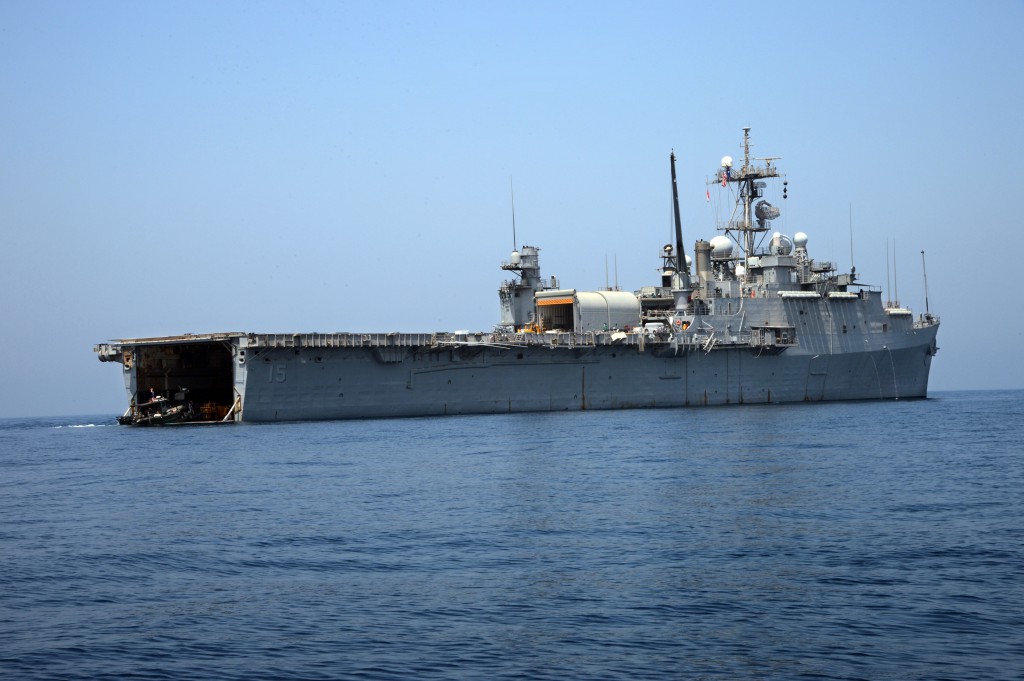
As the war in Iraq has concluded and the United States is officially drawing down its ground-presence in Afghanistan, the U.S. military is changing gears. Domestically, the focus is on diminishing the overall force size while increasing flexibility. While it is still necessary to keep a presence in the Middle East, the U.S. security apparatus is also increasingly focused on the Asia-Pacific region. Naval forces will play a large role in both focuses, thanks to their small footprints, technological superiority and long-term maneuverability.
Although the United States has had troops on the ground in the Middle East for the last decade, much regional influence now comes from the presence of naval vessels stationed just off-shore important countries. With a wide range of strategic and tactical influence, even a single ship can serve as a power projector without violating the sovereignty or territory of a foreign nation. Most recently, the U.S. has displayed maritime security presence off the coast of Iran, Syria, and other important areas of the Middle East.
But the navy will soon be “pivoting” to the Pacfic. Although containing a huge amount of global trade, and several key U.S. allies, the country’s focus on the region has been relatively minor in the past decades, but that’s about to change. The region contains some of the world’s largest economies, newly discovered oil reserves, and important pathways for global trade. Because the region is entirely dominated by water, naval vessels will play a huge role in the increased attention.
The main way the United States will increase presence is in raising the number of ships and troops stationed in the region. While there are currently nearly 50 active ships in the Pacific on a given day, the plan is to increase that number to 60 by the year 2020. These ships will (and do) serve to deter conflict, train allies, and serve as first responders to natural disasters and other emergency events.
Even though the military is cutting budgets overall, this will be accomplished by transferring 6 destroyers stationed in the Mediterranean to the Pacific. There are also new Joint High Speed Vessels and Littoral Combat Ships being constructed in order to be deployed to Africa and South America. The deployment of these new vessels will free up several more destroyers to be sent over to the Pacific.
Additionally, an increased air presence will go hand in hand with the increase in sea presence. The increased aerial operations will mostly focus on intelligence gathering and sharing. An increase in unmanned aerial vehicles in the region will help the United States provide key surveillance, helping allies to police their maritime borders, to keep an eye on pirates and to watch for other significant security threats.
Improved Capabilities
In addition to the quantity of assets deployed to the Pacific, a key area of focus will be improving the capabilities of vessels already there.
The already robust U.S. undersea presence remains completely unrivaled, and due to improvements to submarines, it is likely to stay that way. By upgrading equipment, the United States will remain dominant in anti-submarine warfare, while decreasing the effect of the already out-dated anti-submarine capabilities of competitors.
Submarines can also play a key role in establishing no-fly zones thanks to their surface to air capabilities. As new classes of submarines come into action, this capability will only improve further. Another key area of improvement in new submarines will be upgraded undersea sensors and navigation systems. These features, when improved, will help us gather better information on undersea terrain, and increase intelligence on the vast but unexplored ocean floor environment.
But while submarines offer somewhat of a covert network of support, in times of relative peace in the Pacific, an important aspect of our presence will simply be the visibility of our vessels. Here, the surface vessels will conduct cooperative exercises with regional partners, and their general presence will hopefully deter escalation of some developing maritime conflicts.
Such partnerships include close ties to Japan, South Korea and the Philippines, but are not limited to only those countries. Recently, a Rim of the Pacific training exercise involved more than 20 allies and partners, and was the year’s biggest maritime exercise. Partners in this relationship even include countries such as Russia and India.
Although the United States will continue to increase focus on Asia-Pacific, that does not mean global fleet capabilities will diminish in any way. The planned deployment of different, lower-cost vessels so South America and Africa will help in two ways: It will allow destroyers and other battle-focused vessels to transfer to the Pacific, while replacing those ships with ones that are more suited to the kind of challenges face in Africa and South America. So far, the military has planned well for reducing cost and increasing flexibility of the navy, while increasing presence and capability in a vital region to global security.